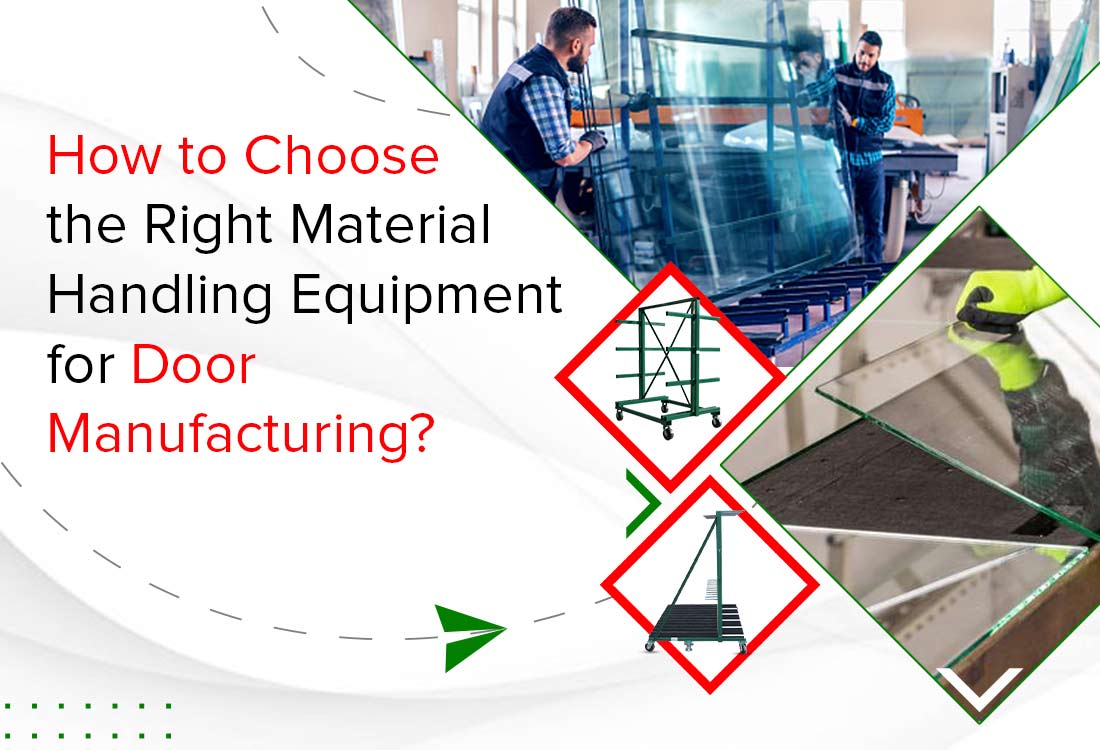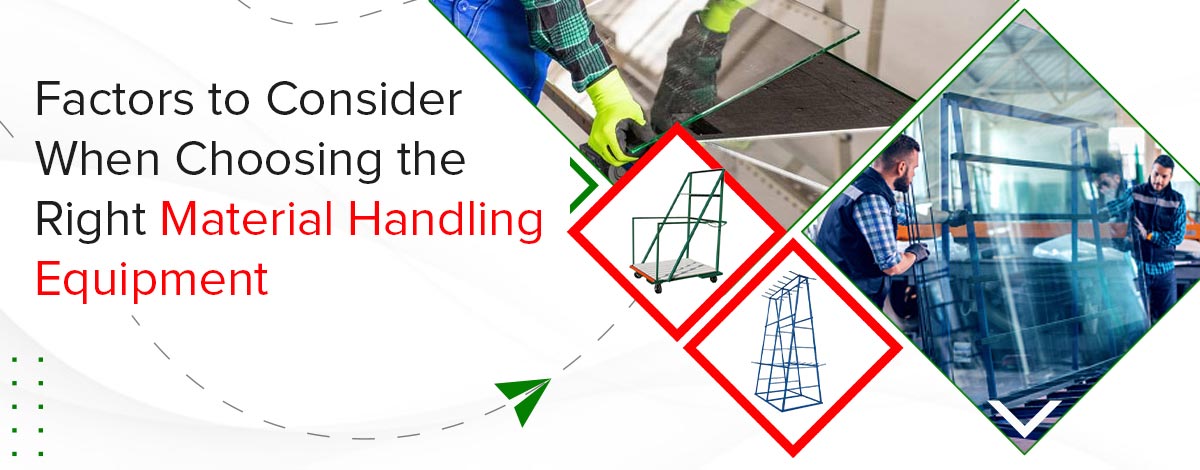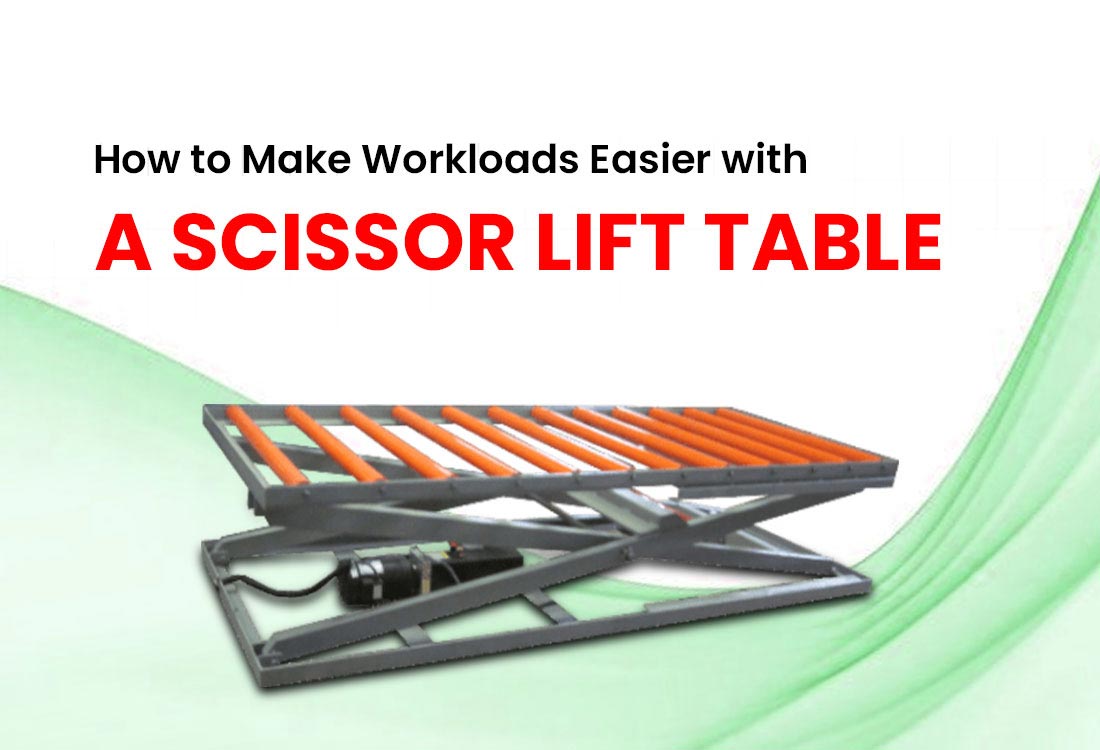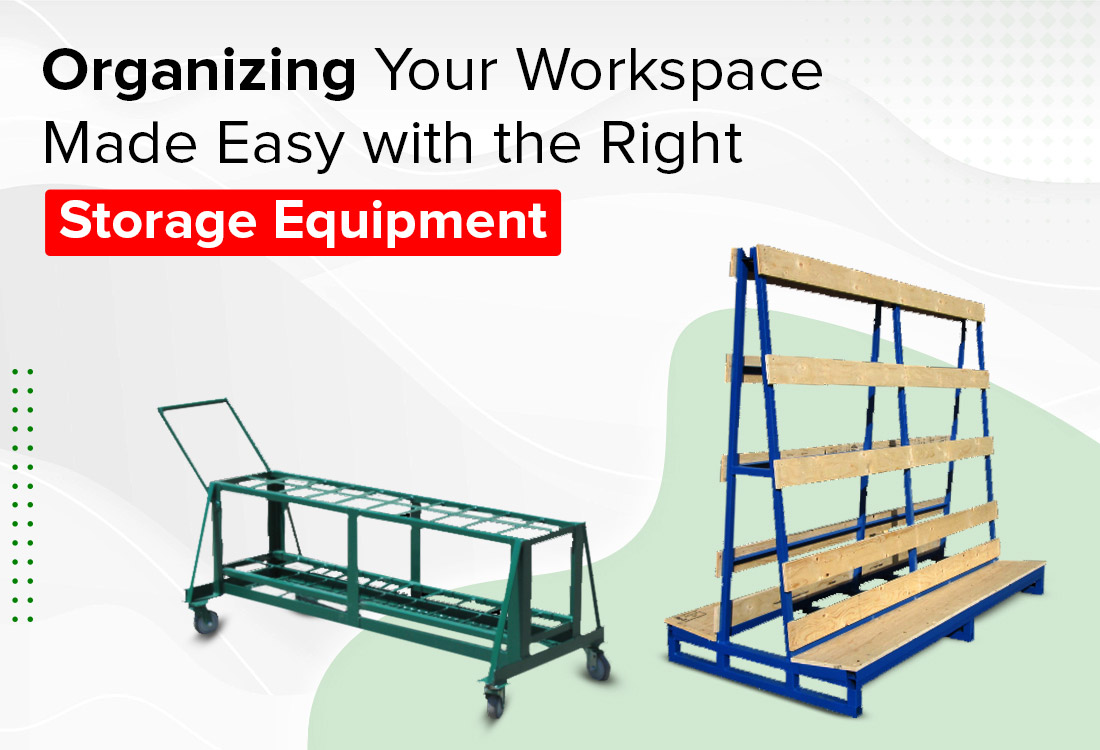How to Choose the Right Material Handling Equipment for Door Manufacturing?

How to Choose the Right Material Handling Equipment for Door Manufacturing?
Are you in the door-making business? If yes, you probably know how tricky it can be to move materials without causing damage or delays. Every task, like handling raw panels, finishing the final doors, and organizing storage, requires proper care throughout the production process. Even a small mistake in the process can lead to quality issues, slow down production, increase operational cost, and even safety issues. That's why using the right material handling equipment is necessary at every step.
But when it comes to finding the right equipment, things are not always as easy as they look. You need to keep a few things in mind so you end up with tools that actually fit your workshop and workflow.
This web blog is all about what material handling is, the types of equipment you can use, and some key things to consider before making a choice.
What is Material Handling in Door Manufacturing?
Material handling is the process of storing, moving, and protecting materials throughout the production process. In door manufacturing, these materials can range from large wooden boards and metal sheets to fragile glass panels and fiberboards. Some items are heavy or oversized, while others are light and delicate. This makes it really important to use the right equipment to keep everything safe and avoid damage while handling.
Types of Material Handling Equipment for Door Manufacturing
Here are some common types of material handling equipment you’ll see in door manufacturing:
Conveyors: Conveyors make it easy to move doors or panels from one station to another without lifting them by hand. This saves valuable time that you and your team can invest in other tasks.
Forklifts: Forklifts are a must for moving heavy items like wooden boards, metal sheets, or large finished doors around the factory or storage area. They make handling bulky materials safer and less tiring for your team.
Roller Systems: When doors have to pass through multiple stages like cutting, sanding, or finishing, the roller systems help move them effortlessly between workstations. This way, they reduce physical strain on workers and maintain a smooth production flow.
Racks and Carts: The right storage setup is important to keep your semi-finished and finished doors safe. Racks and carts give you an easy way to organize, store, and move your products without worrying about scratches, cracks, or other damage.
Overhead Cranes and Vacuum Lifters: Lifting heavy and large doors manually is not a safe option, right? But with equipment like overhead cranes and vacuum lifters, it becomes easy to lift and position different types of doors and panels—no matter if they're made of wood, metal, or glass.
Factors to Consider When Choosing the Right Material Handling Equipment

Look, there is no one-size-fits-all solution when finding the right material handling equipment. There are several things to know so you can choose what is best for your workplace needs.
Take a look below to get an overview of key factors you should consider before making the right choice.
Your Door Type: The equipment you choose must match the type of doors you produce. For example, is it heavy wood, delicate glass, or bulky metal? That’s because each type requires a different handling solution, and choosing the wrong one can lead to production delays and even safety hazards.
Produce Size and Weight: The next thing is considering the size and weight of your product. For example, oversized doors require stronger and durable equipment, while fragile glass panels need gentle handling solutions. Being clear about the size and weight will help you pick the right equipment that can handle materials safely.
Load Capacity: Look at how much load the equipment can handle. It should easily support your oversized doors or panels to prevent any kind of damage. For example, if you often produce doors that weigh 200 pounds, make sure the cart or hoist can safely lift and transport that weight.
Safety Features: Safety is non-negotiable, right? Buy equipment that has important safety features like emergency stop buttons, overhead protection, secure locking mechanisms, etc. Features like these improve the safety twice during production.
Your Workplace Size: Before you finalize the equipment, make sure it fits in your workplace without blocking pathways and interrupting workflows. If your workspace is tight, compact or modular, material handling solutions might be suitable for you.
Operational Needs: Think about how often and how much material you need to move. If you handle lots of doors every day, powered or automated equipment can make your work much easier. However, if you handle doors in smaller quantities, it would be better to choose simple manual tools.
Workers' Safety and Comfort: Keeping your workers safe and comfortable should always be a top priority. Choose equipment that is ergonomic, easy to use, so daily tasks are longer and productive.
Compliance with Safety Standards: The material handling tools should meet all relevant safety standards and industry regulations to make sure both your workers and products are protected while using them.
Any Customization Needs: Do you need equipment specifically tailored to your specific needs or workplace size? If yes, get in touch with companies that offer customized solutions. They will assess your requirements and then offer the equipment accordingly.
Your Budget: The upfront cost can be high, but the long-term benefits, like reduced material wastage, improved safety, and high output in less time—make the investment worth it.
Perks That Actually Matter on the Floor
Here are some benefits you’ll notice when using material handling equipment:
Less Material Damage: Manually handling doors and panels can cause scratches, dents, and even complete damage. With the right handling tools, the materials stay protected throughout the production process.
Reduced Physical Strain: The material handling equipment takes the weight off the shoulders, reducing physical strain on workers and thereby preventing injury risk.
More Output, Less Effort: Material handling tools allow workers to move materials faster, which increases productivity and reduces physical effort.
Kear Fabrication Inc.—Helping You Handle Doors Smart Way
Choosing the right equipment is essential, but selecting the right company is equally important. A trusted partner like Kear Fabrication Inc. helps you find the best material handling equipment tailored to your needs. We offer durable and high-quality equipment that helps improve your workflow, protect materials, and boost overall productivity. And the best thing? We also deal in custom material handling solutions, which means you get exactly what you need—no compromises, no wasted space, and no unnecessary costs.
So, get in touch with Kear Fabrication Inc. today to find the best material handling equipment. Call us now for expert guidance from our team.


